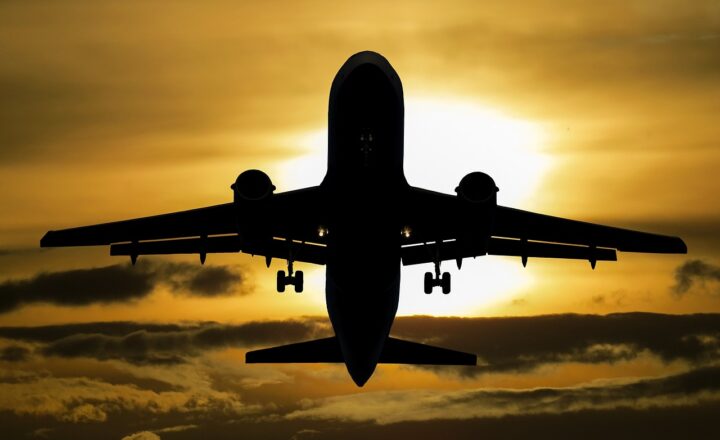
For many passengers, the sensation of turbulence can induce a sense of fear, especially during a flight. The plane shakes, rattles, and sometimes even drops slightly, leading many to wonder: how dangerous is turbulence really?
1. Understanding Turbulence: What Is It?
Turbulence is simply an irregular motion of the air, a phenomenon that occurs in the atmosphere that can cause disturbances to a flight. It’s primarily caused by several factors:
- Weather Systems: Storms, wind patterns, and atmospheric pressure changes can create turbulent conditions.
- Terrain: When flying over mountains or other geographic formations, the airflow can be disrupted, leading to turbulence.
- Jet Streams: These fast flowing, narrow air currents found in the atmosphere can lead to turbulence when an aircraft crosses into or out of these streams.
- Clear Air Turbulence (CAT): This type of turbulence occurs at high altitudes without visible weather conditions and can be particularly surprising to pilots and passengers alike.
Being aware of these contributing factors helps demystify turbulence and its prevalence in air travel.
2. The Physics Behind Turbulence
To truly understand turbulence, one must delve into the physics behind it. Airflow can switch drastically due to temperature changes and airflow patterns. Generally, when a plane encounters a patch of turbulent air, the aircraft shifts up and down or tilts slightly.
Aircraft are engineered to withstand significant turbulence, and pilots are trained to handle it. The wings of an aircraft are designed to flex and absorb these changes in air pressure. It’s important to note that turbulence is a normal part of flying, leading to an average of 50% of all flights experiencing some form of it.
3. How Dangerous Is Turbulence?
Despite common fears, turbulence is rarely dangerous. According to various aviation safety reports, deaths from turbulence are exceedingly rare. Most injuries occur when passengers are not wearing their seatbelts, leading to potential falls or collisions with overhead storage.
Statistics reveal that from 2009 to 2018, turbulence resulted in approximately 30 passenger injuries each year in U.S. commercial aviation, most of which were minor.
Many pilots prioritize safety and can often predict turbulence, adjusting the flight path when necessary. Modern aircraft are built to endure conditions that would far exceed typical turbulence levels.
4. Types of Turbulence: What Passengers Experience
Turbulence is categorized into several types, and understanding them will help demystify the flying experience:
- Light Turbulence: This causes slight, erratic changes in altitude and/or attitude. You might feel a little bump but remain safe and secure.
- Moderate Turbulence: At this level, you’ll notice more pronounced changes in altitude and attitude. However, the aircraft remains in control.
- Severe Turbulence: This is less common, resulting in large, abrupt changes in altitude or attitude. It may make it difficult for pilots to control. Passengers might feel tossed about but are still secure.
- Extreme Turbulence: Very rare, this involves violent up-and-down movement, potentially causing a loss of control. However, modern jet aircraft are exceptionally designed to recover quickly even from extreme turbulence events.
5. How Airlines Prepare for Turbulence
Airlines and flight crews are well-equipped to handle turbulence, incorporating several safety measures:
- Pre-flight Planning: Pilots receive weather briefings before takeoff, which include potential turbulence alerts, allowing them to adjust flight paths and altitudes accordingly.
- In-flight Monitoring: Use of advanced weather radar systems helps pilots identify turbulence during a flight, allowing for real-time adjustments.
- Communication with Passengers: Flight crew will always inform passengers of impending turbulence, encouraging them to fasten their seatbelts.
Being aware of these preparation procedures can enhance passenger confidence while flying.
6. Coping with Turbulence: Passenger Tips
For those who still feel anxious about turbulence, here are some strategies to cope:
- Buckle Up: Keeping your seatbelt fastened while seated can help prevent injuries during unexpected turbulence.
- Stay Calm: Practicing deep breathing or visualization techniques can combat anxiety. Remember that turbulence is normal, and pilots are highly trained to manage it.
- Distract Yourself: Engage in entertainment options available onboard, such as movies or books, to keep your mind off the bumps.
By implementing these tips, it’s possible to endure turbulence with greater ease.
Conclusion: Embracing the Flight Experience
In conclusion, turbulence, while uncomfortable, is not inherently dangerous. Understanding its causes, types, and preparations can help demystify the experience for passengers. Embrace the adventure of flying, knowing that pilots and airlines prioritize safety and are well-prepared to navigate through any turbulent conditions.
As air travel continues to be a popular means of transportation, a little turbulence should never deter you from taking to the skies. Remember to buckle up, stay calm, and enjoy the journey.






